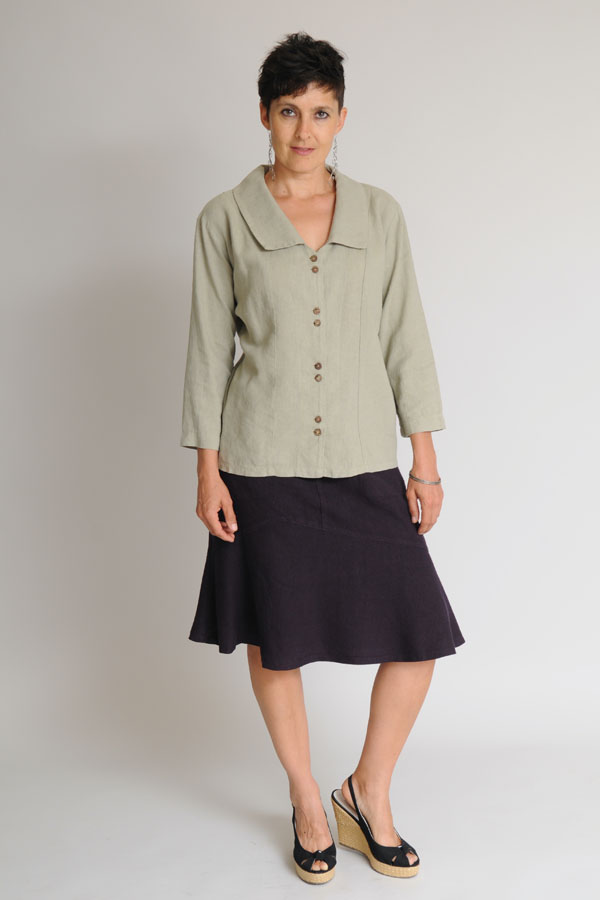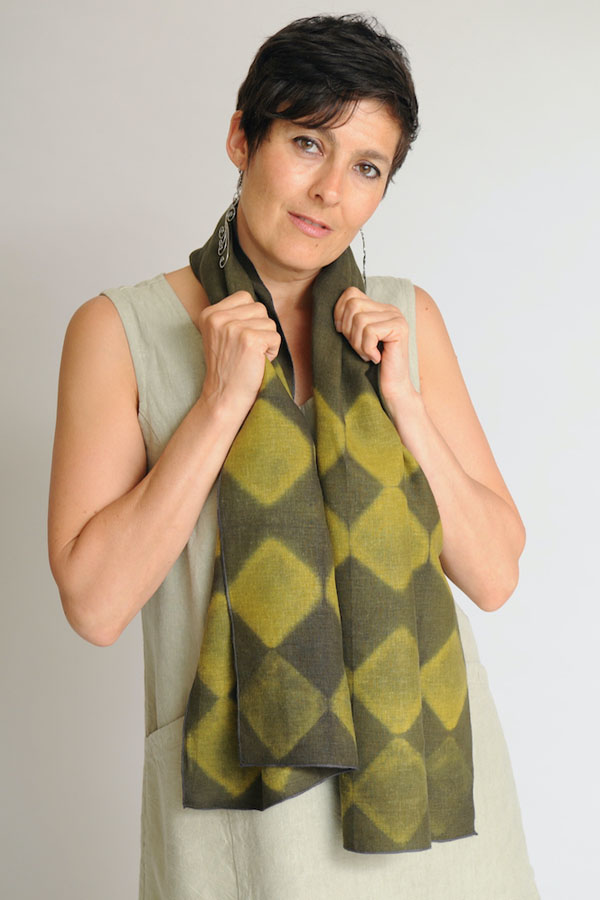Giving sustainable clothing a grade is a tricky business
Posted by Rose on 5th Aug 2021
Measuring the ways sustainable clothing benefits the environment is downplayed by the Higg Index, the sustainability yardstick big manufacturers use.
Have you heard of the Higg Index? It’s a tech platform that disseminates data which it promises will help apparel and footwear manufacturers measure and reduce their environmental imprint. Which sounds great on its face, considering huge players like Nike and H&M use the Index as a guidance tool. But as is so often the case when digging into sustainability issues, it's crucial to get into the details. The details around exactly what the Higgs Index does and doesn’t measure are perfect proof of that. It doesn’t take long to realize the Index has a decidedly anti natural-fiber stance.
Are the hemp and Tencel content in the Sage Princess Top and Plum Flip Skirt bad for the environment? A flawed but widely used analysis tool claims they are.
According to the Index, seven of the ten “worst” textiles with the biggest environmental impact are natural: silk, alpaca, cotton, hemp, flax (linen), wool, and jute, in that order. Acetate and modal, both of which are semi-synthetic plant-based fibers, rank sixth and ninth respectively among fibers with the greatest environmental impact according to the Higg Index.
Conversely, the majority of the ten “best” fabrics, or those with the lowest impact, are synthetic. They include aramid, elastane, polylactic acid fibers, polyester, polyurethane, nylon, and acrylic!
Really, the ten BEST? What is wrong with this picture?
If you listen to Higg, silk has almost 14 times the environmental impact of its semi-synthetic, cheap replacement, acetate. According to Higg, the negative impact of an alpaca sweater can be halved by instead making it from acrylic. In a scathing critique of the Higg Index, Alden Wicker of EcoCult writes (sarcastically), "It might not feel great to know your dollars are going to a factory owner instead of an indigenous herder, but at least you’re saving the environment? Similarly, if you wanted to reduce the impact of that artisan-made goat leather knapsack from Ethiopia, you could instead import polyurethane from China, and give that to the leather workers. Of course, then that goat hide, a byproduct of the local cuisine, would be thrown in the landfill. But now your environmental impact is lower, and also PETA will leave you alone. It’s a win-win for brands, if a very bizarre move for the artisans.”
The Higg Index overlooks the many earth-friendly benefits of the hemp and Tencel fibers that go into Sympatico’s Trapeze Tunic in Sage and Olive/Turmeric Scarf.
EcoCult’s criticism of the Higg is focused around three glaring deficiencies in how it gathers and interprets data:
Natural fibers lack the accurate data available for petrochemicals materials
The Higg is biased toward highly standardized fibers that are spun in a factory and thus extremely consistent in their impact worldwide. Whether you measure the impacts of spinning petrochemical fibers in China or Indonesia, the impacts will be similar. With natural fibers, their cultivation is spread all over the globe, so it’s much harder to generalize what their impacts are from place to place. You have to factor in all the local growing conditions and practices in order to make a meaningful judgment.
Focus on how fibers are made rather than on their types
Many of my blog posts focus on types of fiber, but I also examine the way those materials are made. The processing to a large degree determines the sustainability of the end product natural fiber. In order to assess sustainability, we need to know how much fossil fuel goes into making each square yard or kilogram of material. But again, because the Higg Index relies on global data, and natural fiber manufacturing is more decentralized, comparisons are not really possible.
Regenerative practices aren’t being measured by Higg
Positive environmental inputs from regenerative farming and ranching practices aren’t factored into the Higg calculation of sustainability. Perversely, the Index disadvantages agricultural methods that have already proven to benefit our planet. Techniques that result in carbon sequestration and improved soils and waterways are just a couple of the positive impacts of regenerative agriculture that Higg blithely ignores. Searching Higg documents, you’ll find that benefits of natural fibers, such as their compostability at the end of life are given short shrift. Similarly, there is no real discussion of the microfiber pollution resulting from the Higg’s Index’s favorite synthetic fibers.
The bottom line is that being a conscientious consumer calls for constant education and the willingness to dive into the details. To that end, I hope you found this post useful in your search for genuinely sustainable clothing brands.
Share:







